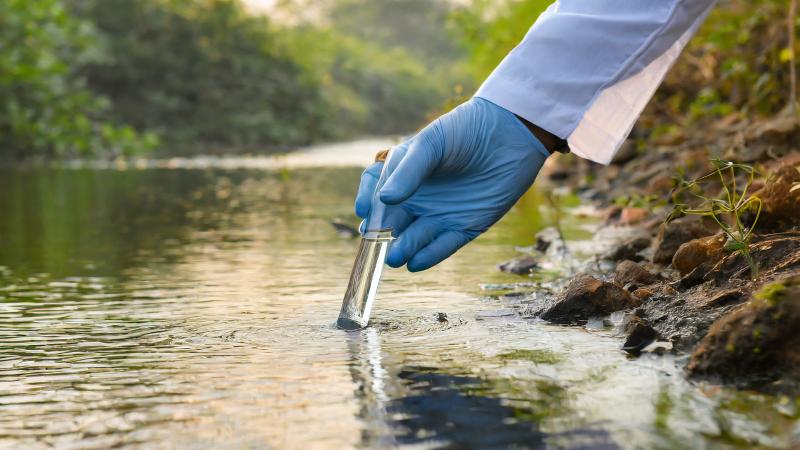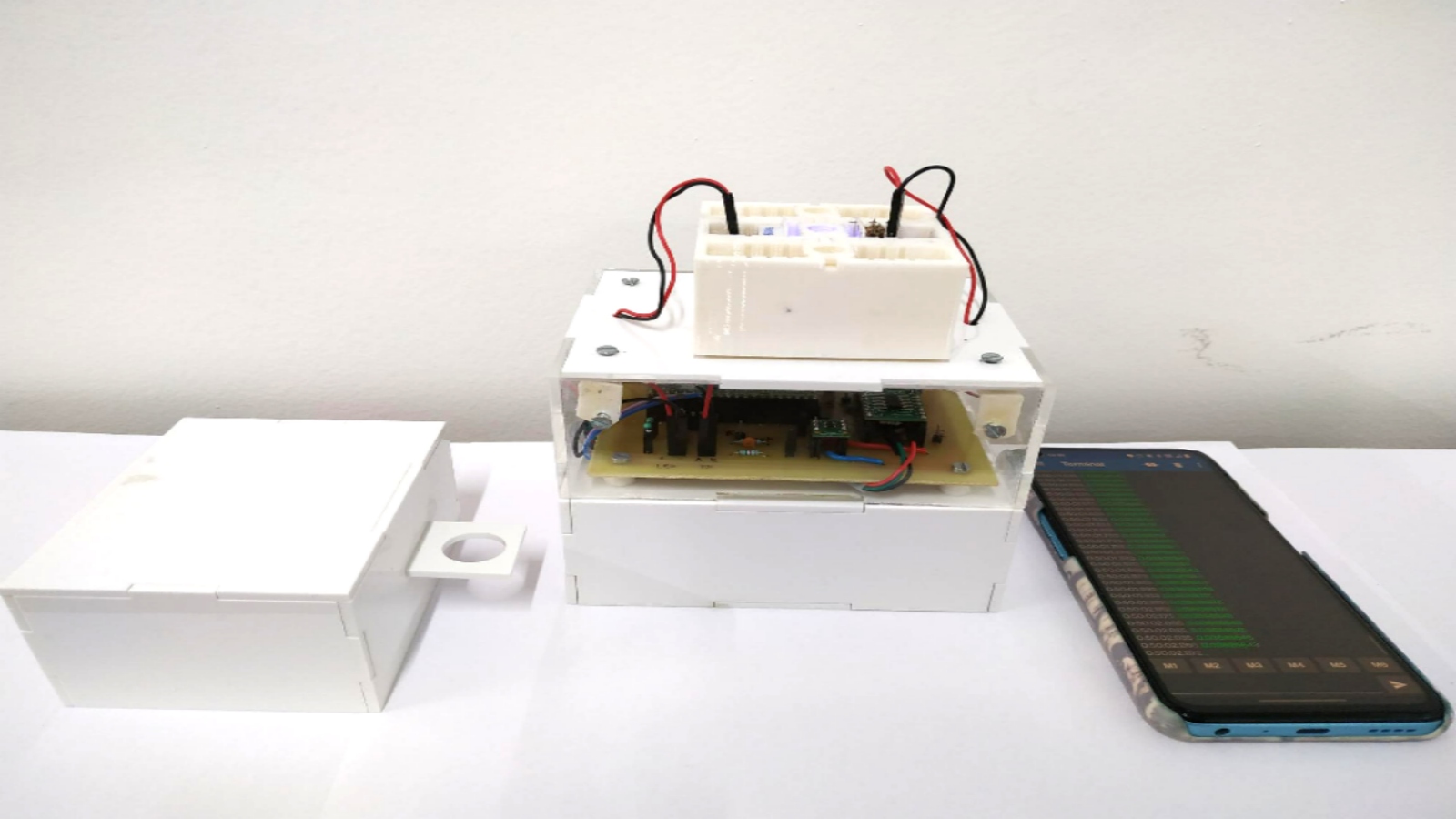
Scientists from the Indian Institute of Technology Bombay (IIT Bombay) have developed a low-cost, portable device designed to detect DNA in wastewater and other water bodies to aid in the early detection of viral and bacterial pathogens. The sensor was shown to be able to detect the presence of pathogens, such as E. coli bacteria and bacteriophage phi6 virus, in sewage and water bodies.
Wastewater surveillance involves monitoring wastewater and sewage water in an area for pathogens to ascertain the health of a community. Studies have shown that the concentration of pathogens in wastewater can be used as an accurate measure for the population-level spread of a disease.
“The origin of monitoring wastewater and sewage for pathogen detection and outbreak of epidemics goes all the way back to 1939 when the initial application of wastewater surveillance for detecting poliovirus on a community level was demonstrated,” says Prof. Siddharth Tallur, from the Department of Electrical Engineering, IIT Bombay and a part of the team that developed the new portable sensor.
In recent times, the COVID-19 pandemic has once again brought out the importance of wastewater surveillance. Some of those infected with the SARS-CoV-2 were asymptomatic, showing no external signs of infection, and hence posing challenges to track them with clinical surveillance alone. Data from wastewater surveillance complemented clinical surveillance data by providing valuable estimates as to how many individuals were infected and which SARS-CoV-2 variants were circulating in a community.
“Wastewater-based epidemiology serves as a tool for data collection from populations which lack adequate access to healthcare and large-scale individual-level diagnostic testing,” adds Prof. Tallur.
Currently, the most commonly used method for detecting disease-causing agents is the real-time quantitative polymerase chain reaction (RT-qPCR), a technique known for its high specificity and sensitivity. However, the qPCR method requires expensive probes and trained personnel to administer, thereby limiting its application to well-equipped laboratories.
The COVID-19 pandemic saw the invention of several new biosensors and detectors that could pick out the SARS-CoV-2 virus from wastewater samples. There have also been smartphone-based sensors that detect changes in colour in a sample denoting the presence of pathogen DNA. These, however, either sacrifice sensitivity or require expensive reagents and equipment, sterile lab conditions and experts to operate. The new portable sensor developed at IIT Bombay significantly reduces these limitations. It is highly sensitive to any DNA present in a sample, yet keeps the costs low.
The IIT Bombay device functions by detecting colour changes in samples created by the interaction of DNA with methylene blue (MB) dye. Intercalation is the process by which molecules, such as methylene blue, insert themselves in between bases of DNA. This causes a change in the property of the material to absorb light of different wavelengths, thereby causing a change in its colour. In a sample prepared for testing, this leads to a change in the colour of the sample. The colourimetric sensor system is designed around an indigenously built circuit, called a phase-sensitive detection circuit, which detects this change in colour. The sensor consists of a sample holder connected to the colourimetric sensor. Once a sample is placed in the sample holder, the sensor picks up any colour change in the sample due to DNA, which is then converted to a voltage signal for measurement and recording. The IIT Bombay team has also developed a mobile application that can read this voltage signal via Bluetooth and display the information on a smartphone.

PCR is a process used to multiply a specific DNA segment. Unpurified PCR products, along with the DNA, contain other organic materials like enzymes and nucleotides along with chemical contaminants, like primers and buffers used for the process. The sensor proved to be capable of detecting DNA in unpurified PCR products and distinguishing these from control samples, containing purified DNA.
The phase-sensitive detection circuit, which was completely designed and built at IIT Bombay, is constructed from low-cost semiconductor integrated circuit components and a low-power LED light source. Methylene blue is a widely used dye – easy to obtain and inexpensive. These factors have allowed the researchers to keep the cost of manufacturing and operating the sensor low.
“The technology developed in our work holds promise for the realisation of a truly cost-effective solution for wastewater-based epidemiology,” opines Prof. Tallur.
The sensor is, however, not without its limitations. The use of methylene blue dye means reduced specificity of the device.
According to Prof. Tallur “It (methylene blue) will bind with any DNA present in the sample to which it is added, and therefore the overall specificity of the sensor is determined by purity and choice of the primers used for target amplification in PCR (chemicals added to target DNA of a specific pathogen).”
The research team envisions that with advancements like other dyes with higher specificity, target-specific probes and robust microfluidic chips, the system can be enhanced for improved sensitivity, specificity, and robustness.
The development of the device is in its nascent stages and with time more improvements are expected.
“We are working on developing more time-efficient and low-cost methods for sample pre-processing, and robust and highly specific assays that can be used for optical and electrochemical DNA sensors. We have filed some patent applications based on these ideas and work, and more will be filed in future as we continue to make progress in this direction,” remarks Prof. Tallur about the future of the new device.
The successful application of this sensor could prove crucial for regular surveillance and early warning systems for potential epidemic outbreaks. It has the potential to revolutionise environmental screening methods for viral and bacterial infections, enabling early detection and prevention strategies to be initiated at the outset. The most important aspect is that it is possible to achieve all of this without a significant dent in the finances of institutions and nations.





